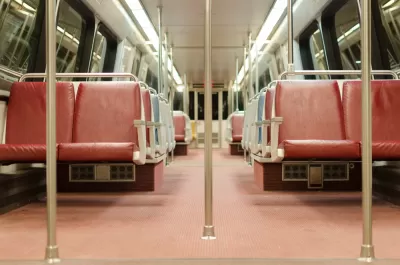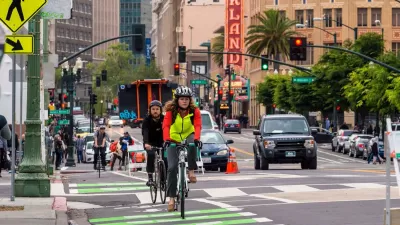A location data company has created a Social Distancing Scorecard to track the progress of Americans, down to the county level, in reducing travel in accordance with recommendations to reduce physical contact.

Unacast, a mobility data company based in New York and Oslo, has created a Social Distancing Scoreboard to track the success of Americans in reducing travel in the days and weeks since the coronavirus pandemic has spread across the country.
A blog post by Thomas Walle, CEO and co-Founder, of Unacast, explains the Scoreboard's methodology. The company uses its Real World Graph® data engine to identify geospatial mobility data. After several iterations, the company decided to use "change in average distance traveled" as its metric for the Scorecard.
As for the final tally, the Scorecard assigns letter grades based on whether the change in average mobility has dropped more than 40 percent (an A Grade), between 30 and 40 percent (B), 20 to 30 percent (C), 10 to 20 percent (D), and less than a 10 percent decrease (an F grade).
The Scorecard includes a grade for the entire United States (B), as well as grades for every state and county. The five states leading the social distancing effort, as of this writing: the District of Columbia (considered a state here), Alaska, Nevada, New Jersey, and Rhode Island. The states reducing average distance traveled the least, as of this writing, are Wyoming, Montana, Idaho, New Mexico, and Oregon.
For an additional comparison, the state currently considered the hot bed of the pandemic, New York, has reduced average distance traveled by 48 percent. The country's most populous states, California, has also reduced average distance traveled by 48 percent. Both of those metrics were last updated on March 24 as of this writing.
Unacast is promising that the Social Distancing Scorecard is only the first of multiple releases it has planned for a COVID-19 Toolkit.
FULL STORY: Social Distancing Scoreboard

Maui's Vacation Rental Debate Turns Ugly
Verbal attacks, misinformation campaigns and fistfights plague a high-stakes debate to convert thousands of vacation rentals into long-term housing.

Planetizen Federal Action Tracker
A weekly monitor of how Trump’s orders and actions are impacting planners and planning in America.

In Urban Planning, AI Prompting Could be the New Design Thinking
Creativity has long been key to great urban design. What if we see AI as our new creative partner?

King County Supportive Housing Program Offers Hope for Unhoused Residents
The county is taking a ‘Housing First’ approach that prioritizes getting people into housing, then offering wraparound supportive services.

Researchers Use AI to Get Clearer Picture of US Housing
Analysts are using artificial intelligence to supercharge their research by allowing them to comb through data faster. Though these AI tools can be error prone, they save time and housing researchers are optimistic about the future.

Making Shared Micromobility More Inclusive
Cities and shared mobility system operators can do more to include people with disabilities in planning and operations, per a new report.
Urban Design for Planners 1: Software Tools
This six-course series explores essential urban design concepts using open source software and equips planners with the tools they need to participate fully in the urban design process.
Planning for Universal Design
Learn the tools for implementing Universal Design in planning regulations.
planning NEXT
Appalachian Highlands Housing Partners
Mpact (founded as Rail~Volution)
City of Camden Redevelopment Agency
City of Astoria
City of Portland
City of Laramie





























